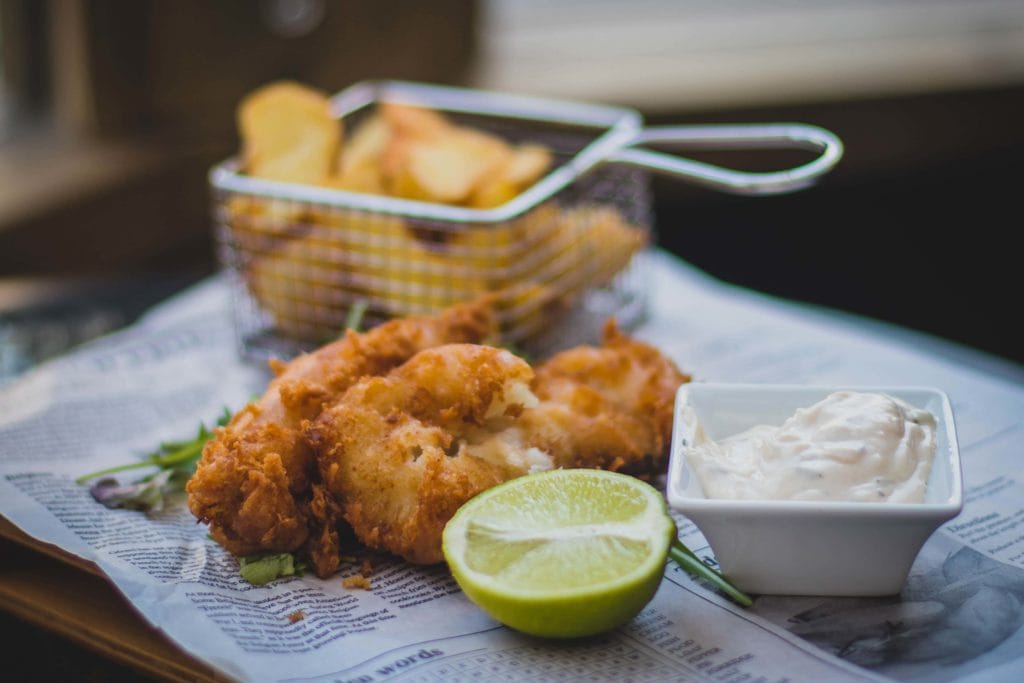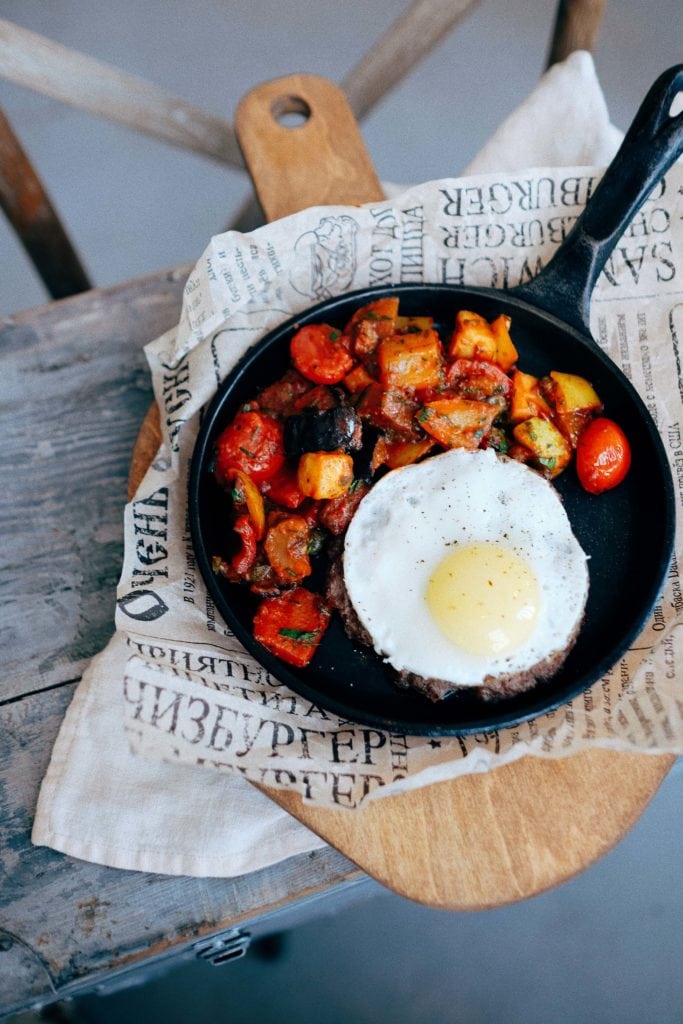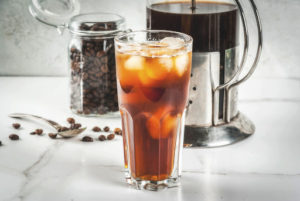
Ever wondered what vegetable shortening is? It is actually the source of the light flakiness we desire in pie crusts and biscuits.
Vegetable shortening is solid fat used as a substitute for butter or lard, perfect for baking or greasing pans.
Like butter, vegetable shortening is considered solid at room temperature with no flavor or smell. However, you need to know something important about it before you start frying with it: its smoke point.
We’re going to share with you information about Crisco, its smoke point, and everything else in between.
What is Crisco?
Crisco is a popular baking brand of vegetable shortening introduced by Proctor & Gamble the first ever-shortening product made of vegetable oils in 1911.
This vegetable shortening is the best replacement for butter or margarine when cooking or baking. It is widely known for producing pies’ flaky crust, cakes, soft cookies, and fluffy frosting.
Crisco is coined “shortening”, as it is responsible for coating each flour’s protein molecule, making it difficult to create gluten’s longer strands. The strands tend to become shorter; thus, it is called “shortening.”
Crisco is made 100% without water, allowing steam formation while baking.
What is a Smoke Point?
A smoke point is the specified temperature at which oil starts to break down into fatty acids and produces visible smoke. It can be measured using a thermometer.
The smoke point of various oils, fats, and shortening vary, yet with prolonged heating, all will eventually smoke. It is vital to note that it is completely unsafe to maintain a smoke point, as reaching the oil’s flashpoint could ignite a fire.
The smoke point temperatures of some commonly-used fats, including vegetable shortening and butter, are below:
| FAT/OIL | SMOKE POINT | APPLICATION |
|---|---|---|
| Vegetable Shortening | 360-410°F (180-210°C) | Baking, saute |
| Butter | 300-350°F (149-175°C) | Saute, quick pan-fry, baking, roasting |
| Coconut Oil | 350-385°F (175-196°C) | Saute, pan-fry, baking, roasting |
| Extra-Virgin Olive Oil | 325-410°F (163-210°C) | Saute, dressings, marinades, baking |
| Vegetable Oil | 400-450°F (204-230°C) | Searing, baking, roasting, grilling, deep-frying |
| Margarine | 410-430°F (210-221°C) | Saute, stir-fry, roasting |
| Sesame Oil | 350-410°F (175-210°C) | Saute, small amount for stir-frying |
| Lard | 370°F (188°C) | Saute, pan-fry, baking, roasting, deep-frying |
To easily understand the importance of smoke point in frying, remember: the lighter the oil’s color, the higher its smoke point, so it’s best to choose an oil with the highest smoke point. Why? Most fried foods are cooked between 350 to 450 degrees Fahrenheit, so the best oil choice has a smoke point above 400 degrees.
On the other hand, when seasoning cast iron, any cooking oils and fats can be used. Adding oil to your cast iron cookware prevents food from sticking.
Choosing oil depends on its availability, price, effectivity, and the smoke point. No matter what oil you choose, always keep in mind that you should intentionally heat your pan to reach the oil’s smoke point so that polymerization happens. Polymerization is a chemical reaction which bonds the oil to your pan and produces a natural seasoning.
How do Smoke Points Affect Food?
To easily understand the way smoke points affect food, it is essential to explain the origin of fats and how they are processed.
Oils are pulled from nuts and seeds via mechanical pressing and crushing. You can get a raw “virgin” oil that keeps its natural flavor. That said, unprocessed oils such as these are known to carry enzymes, minerals, and compounds that do not work well when heated. These are the type of oils that are best for dressings and any low-temperature cooking.
Manufacturers produce oils with high smoke points through processes like bleaching, high-temperature heating, and filtering. These procedures enable them to remove irrelevant compounds. The result is a neutral-flavored oil with a higher smoke point and longer shelf life.
When we talk about cooking with fats, oil that smokes is not always bad. However, if raw oil or a pool of butter begins to smoke, that is definitely not good.
Once you heat oils past their smoke points, fat begins to break down, resulting in the release of free radicals and a substance named acrolein. This chemical is responsible for the bad smell and taste of burnt foods.
One consequence of the breakdown is the occurrence of the flashpoint. Once the fat starts to degrade, it becomes closer to its flash point, resulting in ignitable gases.
When your oil begins to emit smoke, try your best to avoid panicking. If you are using a neutral fat with a high smoke point, get it off the heat. If you are using a flavorful oil, smell and taste it once it starts to cool down. If it begins to have an unpleasant taste, transfer it to a disposable container, and replace it with a different oil with a higher smoke point.
Long story short: if the fat has a high smoke point, you can use it more often. If you do decide to buy oil with a high smoke point, remember a few essential things: the proven enemies of cooking oils are light, heat, air, and water.
Another note: adding previously-used oil to fresh oil has proven to enhance browning. However, once you hit the smoke point the first time, it lowers it the next time you use that oil; it is vital to remember that once the fat in your deep fryer or pan starts to smoke, the chances for reusing it lessen.
Flavorful oils such as avocado, hazelnut, walnut, and sesame oils need to be refrigerated. That said, even oils with a higher smoke point should never be stored over the stove or near another heat source, as extra heat creates rancidity of the oil.
What Types of Food is it Best to Cook in Crisco?
There is plenty of food best cooked with Crisco shortening. To maximize the freshness of Crisco fully, store it in a cool and dry place.
- Baking. Crisco shortening is the well-loved choice of bakers for providing rich and buttery flavor to their freshly-baked goodies! The best part is, it is vegetarian. It can be easily used in any baked recipes such as muffins, cookies, frosting, and more.
- Pies. Pie enthusiasts adore Crisco shortening for producing the perfect pie crust. The most popular pie recipes include, but are not limited to, cream cheese pie crust, flaky pie crust, homemade Crisco pie crust mix, and classic Crisco pie crust.
- Frying. Many believe that the best food on Earth is fried. Crisco shortening works great with any fried food. Take advantage of Crisco’s benefits while enjoying butter flavor simultaneously by using half Crisco shortening and half butter in cooking!
Crisco Baking Sticks All Vegetable Shortening
Crisco has a convenient way of enriching your recipes with a rich, buttery flavor: measurable sticks! No need to use measuring devices. The marked package helps you use only what you need. Crisco baking sticks do a great job in greasing the pans as well.
Crisco All-Vegetable Shortening
If you consistently use Crisco shortening for baking and frying, the 6-pound cans are perfect for you. Crisco is a great substitute for margarine and butter, but with 50% less saturated fat. This particular product has overflowing five-star ratings for its value and price.
Crisco, All Vegetable Shortening, Butter
If you are not satisfied with the regular Crisco shortening’s buttery flavor, we recommend this alternative. You can achieve enriched buttered flavor with your baking goods and frying food. The best part is, it is healthy with its all-vegetable ingredients!
How to Season Cast Iron Cookware Using Crisco
Cast iron cookware is widely known for providing superior heat retention and cooking food well, yet some people hesitate to use it due to its need for “seasoning”. You may not be aware of how easy seasoning cast iron is.
Seasoning refers to the process of using cooking oil on your pan’s surface until it achieves a “patina,” or a rust-proof layer. This layer prevents cast iron from rusting, as well as brings out its natural non-stick features.
Here are easy ways to season your cast iron cookware:
1. Begin the process with a clean pan.
If you are using brand new cast iron cookware, clean it first. Use a mild detergent and pad to scrub your pan, then rinse it with cold water and dry it. Be warned that you can use soap to wash your cast iron cookware only before you season it. Soap breaks down fats and will ruin the patina of a good cast iron pan.
2. Warm-up your cast iron pan.
Place your clean, dry pan in an oven at 200 degrees Fahrenheit for 15 minutes. Preheating helps open the cast iron’s pores, enabling the seasoning to be easily absorbed. Use paper towels or trivets to protect your counter and tabletops when you remove the pan and make sure to use a potholder or oven mitt.
3. Use oil, then wipe it dry later.
You can use any oil to do this, but it does not make sense to use expensive oils, such as olive oil, for cast iron seasoning. The result will be the same no matter what kind of fat you use. Crisco shortening is cheaper and easy to use. Coat the ENTIRE pan using a paper towel. Then, use dry paper towels to wipe the excess oil. Ensure to keep no trace of oil is left in the pan.
4. Place the pan inside the oven.
Place the oiled pan upside down ona baking sheet in the oven at 450 degrees Fahrenheit. Heat the pan for two hours. Once done, turn off the oven, but don’t take out the pan yet. Leave it inside and let it cool for about two more hours. Congratulations! Your pan is finally seasoned!
Conclusion
Cooking is fun and we love making our families happy with delicious fried food sometimes. But we should always aim to cook properly and safely. Knowing more about Crisco, smoke point, flashpoint, and cast iron cookware seasoning is essential to making great food while you stay safe in the kitchen.
Frequently Asked Questions:
At what temperature do I season cast iron with Crisco?
Once you’ve done coating your pan with Crisco shortening, place it inside your oven in an upside-down position at the highest temperature possible, between 450 and 500 degrees Fahrenheit. The high temperature enables the breaking down of oil and bond with the cast iron.
What cooking oil has the highest smoke point?
The safflower oil has the highest smoke point at 510 degrees Fahrenheit.
Is Crisco like vegetable oil?
Crisco is made from vegetable oil. You can use Crisco as a substitute for vegetable oil when frying.
Additional Resources:
KitchenKapers: How to Season Cast Iron
CriscoCanada: Great Recipes Using Crisco Shortening
Image Credit:
Photo by Valeria Boltneva from Pexels









Rhonda grew up with parents who gardened, hunted, fished, canned, and preserved food. Her mother was a professional cook and Rhonda credits her teaching everything from how to make homemade biscuits and gravy to what kind of meals to serve for different occasions. In the kitchen, Rhonda uses a mix of old-fashioned country cooking and up-to-date fads in the kitchen, often experimenting with replacing higher-calorie or fat ingredients with healthier options that still retain the delicious flavors of the originals.